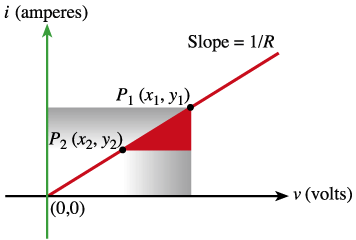Ohm’s Law in Graphical Form
A very valuable
way of analyzing an electric circuit is
by drawing a graph. No other method
provides a more convenient or more rapid
way to observe the characteristics of an
electrical device.
The first step
in drawing a graph is to obtain a table
of data. The information in the table may
be obtained by taking measurements on the
circuit under test, or may be obtained theoretically
through a series of Ohm’s law computations.
Since there are three variables
(v,
i,
and R)
to be analyzed, there are three distinct
graphs that may be drawn. To construct any
graph of electrical quantities, it is standard
practice to vary one quantity in a specified
way and note the changes, which occur in
a second quantity.
The quantity, which is
intentionally varied is called the independent
variable and is plotted on the horizontal
axis. The horizontal axis is known
as the x-axis.
The second quantity, which
varies as a result of changes in the first
quantity, is called the dependent variable
and is plotted on the vertical,
or y-axis.
Any other quantities involved
are held constant. When the equation of
Ohm’s law is plotted, the graph is
a straight line passing through the origin
as shown in Figure 5.2.

Figure 5.2 Ohm’s
Law in Graphical Form
|